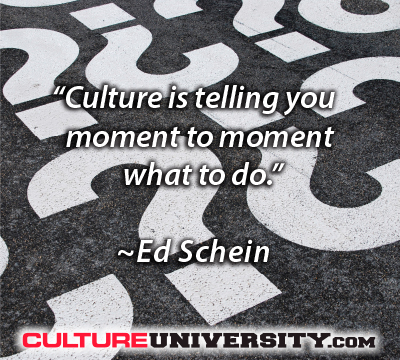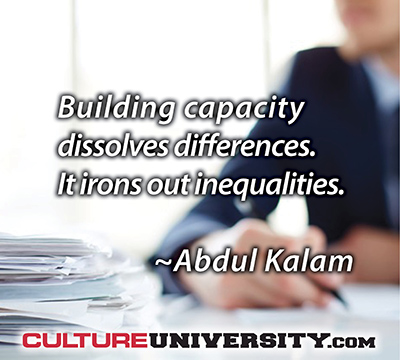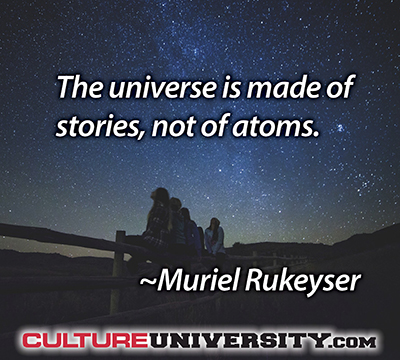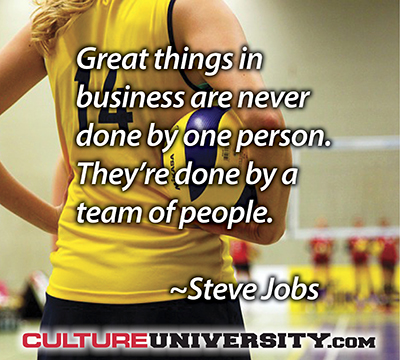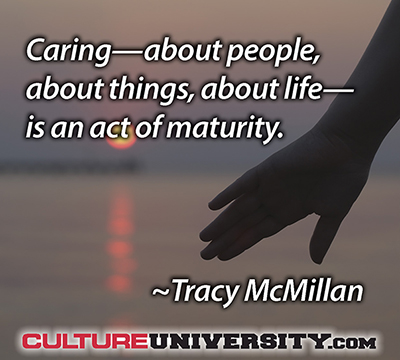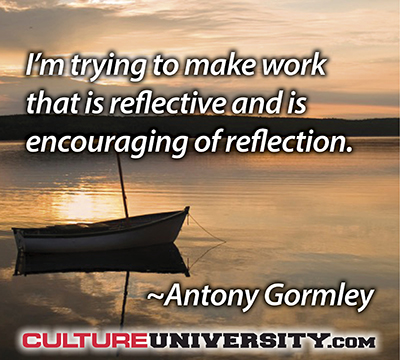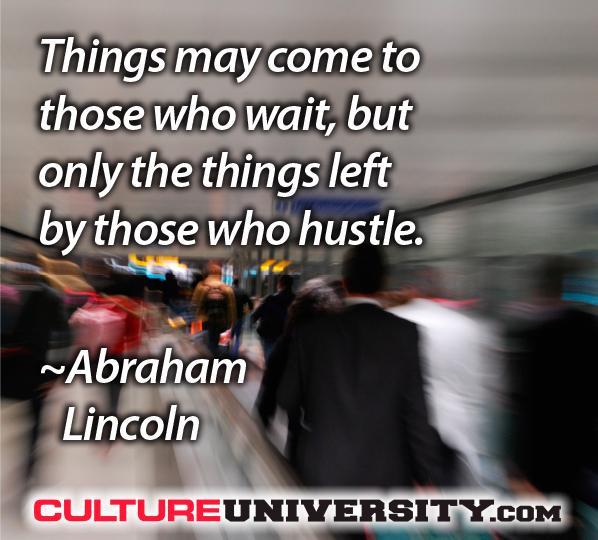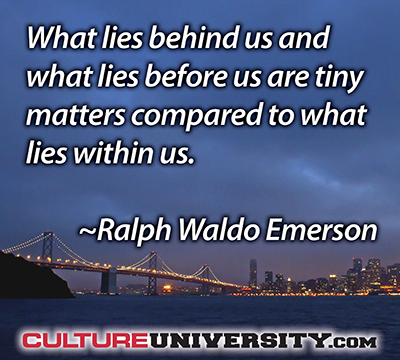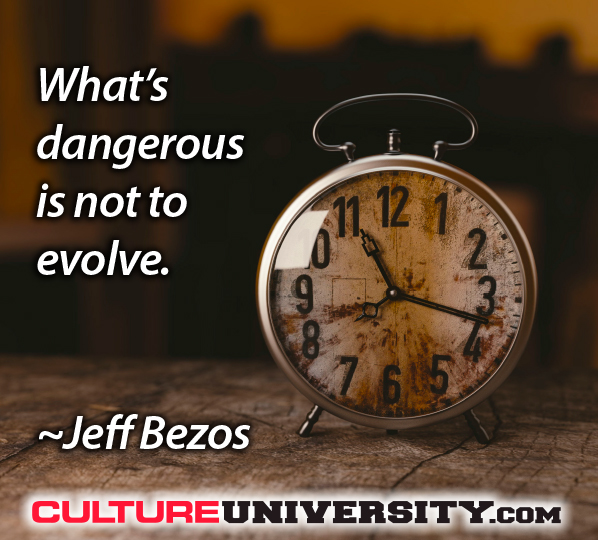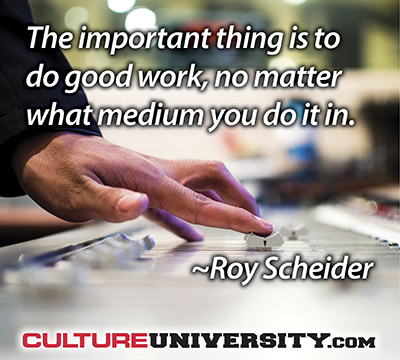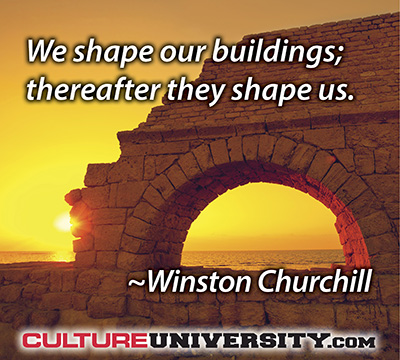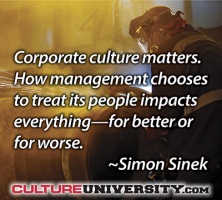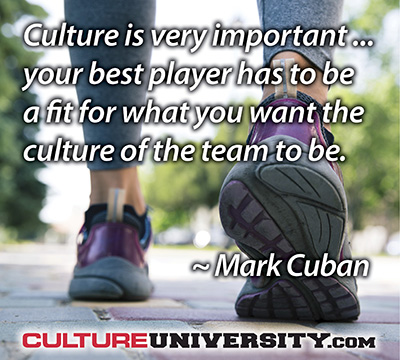I spent 15 years learning and applying culture insights as a senior executive and consultant across multiple organizations before I started to proactively reach out to top culture pioneers and experts to learn about their culture facts and fundamentals. We can’t learn much about culture from the popular press and most social media is dominated by over-simplified or incorrect culture content. Critical culture change insights from the top culture experts in history are unfortunately “secrets” to the vast majority of leaders. Other leaders turn away from the fundamentals of culture to more exotic and superficial solutions.

Positively impacting society on a global scale through culture awareness, education and action.
Leaders will often ask me what they can do to accelerate a change in their culture. As someone who likes to find ways to provide simplicity on seemingly complex and theoretical topics, I’ve long been searching for that mythical ‘one thing’ that will make the most difference. I think I’ve found it. I’ll be interested to hear if you agree with me.
When you think of an effective leader, several characteristics likely come to mind: confident, capable, adaptable. Less obvious are the abilities to conserve capacity by being selective about the projects he or she agrees to take on and then quickly recognizing his or her own demand-to-capacity gaps if the inverse equation of shrinking resources and increasing demands should spike.
Stories are the programming language of culture. The stories people share in an organization reinforce the underlying beliefs and assumptions that shape the culture. To shift culture, reprogram it with new stories.
People sometimes tell me that The Wisdom of Teams: Creating the High-Performance Organization (Harvard Business School Press, 1993) helped them understand the difference between great team experiences and terrible team experiences. These readers recognized the value of what my co-author, Doug Smith, and I called a “real team” — a team composed of people committed to common purposes, goals, and working approaches accepting of the diversity in others’ skills and perspectives. In real teams, members hold themselves and their teammates mutually accountable, because of their emotional commitment to the work and to one another. That’s how they get things done rapidly and effectively.
Caring for your culture is not an annual event or even a monthly event. Just like sleeping and eating, caring for your culture is a daily activity that requires an investment of your time and attention. Caring involves Clarity, Accountability, Relationships and Esteem.
What do we do when we just can’t take anymore? Some of us completely unplug our minds, others explode into a state of hysteria; some of us bang our heads against walls, others run away to the sanctuary of the bar to buy a stiff drink, whilst the tee-total amongst us drink the equivalent strength of an alcohol beverage in coffee. Whether you fall into any of these categories is largely irrelevant, for they all share the same common trait, which I term ‘the emotional tipping point’.
Should your company be striving for the type of advantage that has become the hallmarks of Amazon, Google and Facebook? In the tech world, it’s hard to imagine success without quick and continuous technological improvement. But, in the frantic race for product or service superiority, another advantage is often overlooked – company culture.
It doesn’t matter whether you sell information or cremation, the right kind of organizational culture can bolster and sustain a company’s performance.
Organisations are clamouring to join the race to proclaim their higher purpose, raison d’être, new principles and supporting values and programmes. And imbed sustainability consciousness into their culture. It seems that business has awakened to the need to heal, sustain and nurture the environment, society and the economy; to adopt people, planet and profit bottom lines. There has been an accompanying proliferation of sustainability consultancies, service providers, academic papers and conferences.
Like millions of Americans, I was surprised and a little saddened by Britain’s vote to leave the European Union. I wasn’t surprised, however, by the sharp emotional divide between those who wanted to stay and those who wanted to leave. That’s because the Brexit debate was really about culture. And for a concept that many leaders believe is too intangible or fluffy to worry about, culture sure has a way of bringing out the fight in people.
To most of us, the phrase Work that Matters infers job satisfaction. Our intended outcome is a workplace culture characterized by lower stress, lower turnover, and higher productivity – in business, a ‘win-win’ for employees, customers and shareholders. The logic is infallible. So, I ask you, why is there such a gap between the theory and the practice? Why are so many organizations and so many employees struggling to find workplace nirvana?
As a supervisor or mid-level manager in a global company, you may not have the power to shape the entire culture, but you do have the power to shape culture in your department, local office, or workplace. It is not a question of whether or not you shape culture, but whether you shape culture consciously or unconsciously. The way you speak, the language you use, and the behaviors you exhibit influence the culture whether you are aware of it or not. When obvious signs emerge that indicate workplace drama, such as absenteeism, turnover, negativity or low morale, the leader can start to shift culture by changing language and behaviors. Here are some snapshots along with the behavior and a communication example to help you shape culture and improve business results.
What are your beliefs about organizational culture? Some of your beliefs might inhibit your willingness and ability to proactively improve the quality of your work culture.
New clients ask me very similar questions when I start guiding them along the path to a powerful, positive, productive culture. Some of your beliefs might be challenged by my answers! Here are those questions and my responses.
Everyone in the workplace knows that the bottom line matters, and that without a healthy bottom line, jobs are at risk. Everyone also knows that customer satisfaction matters, since without it there is no healthy bottom line. And everyone knows that quality of products/services matters, because without it the customers won’t be satisfied. And more often than not, this is where the conversation stops.
Professor Edgar Schein reiterated the essence of culture’s cerebral nature at the 1st Ultimate Culture Conference in Chicago, hosted by Human Synergistics last fall when he reminded the attendees of the erroneous tendencies of many professionals who approach culture interventions as a quick fix. Dr. Schein accurately opined on the need for culture and change consultants to fully understand as well as appreciate the intrinsic complexities involved in cultural transformational engagements. For to attempt to change an organization’s culture is to attempt an arduous task. To attempt to change culture, if at all possible, must be with extreme caution, consideration, and patience because culture exists on two planes: the simpler and easier is the visible, peripheral stuff ; while the harder is that which lies deeply within and referred to as the skeleton by Dr. Schein.
